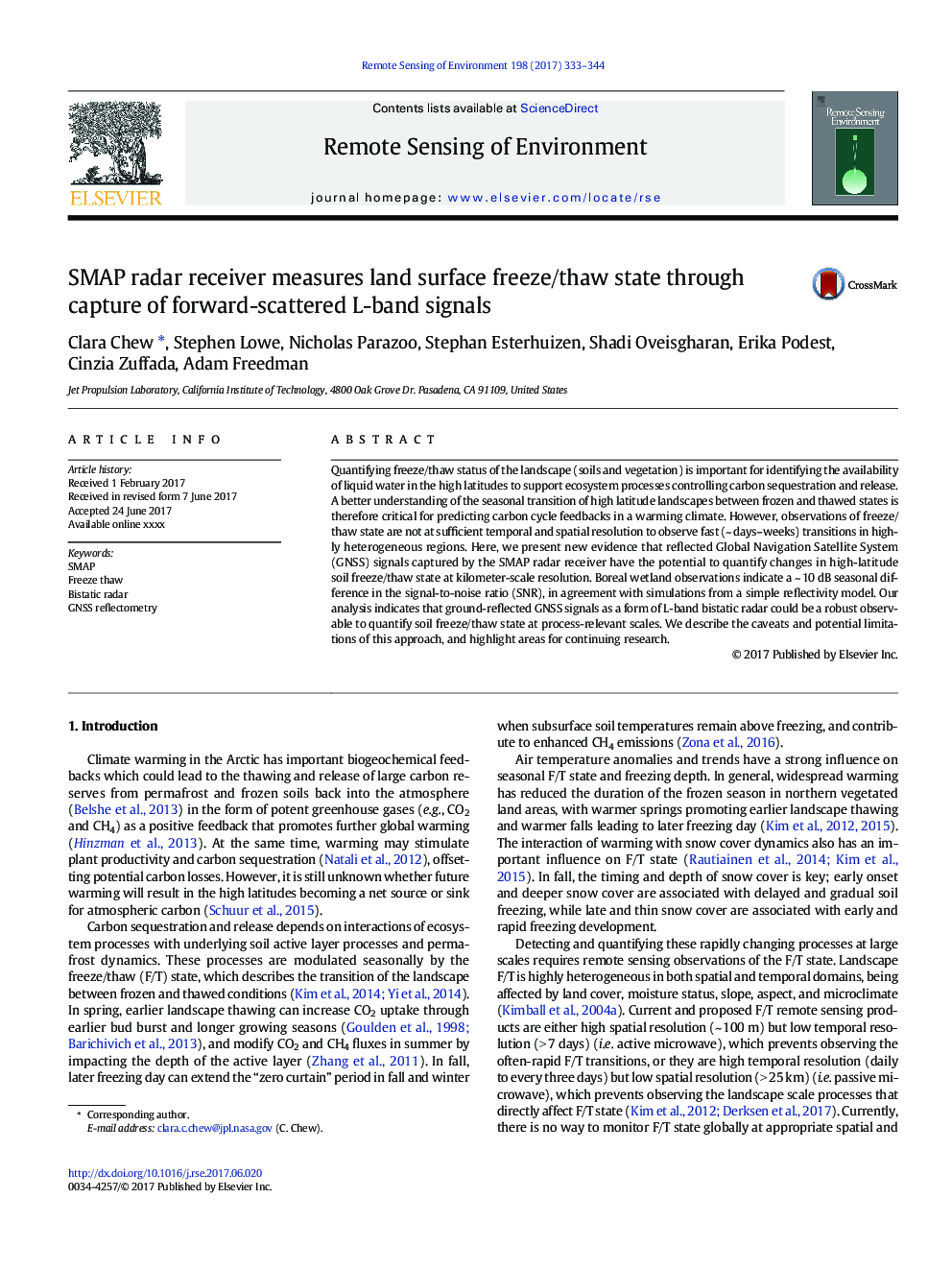| Article ID | Journal | Published Year | Pages | File Type |
|---|---|---|---|---|
| 5754939 | Remote Sensing of Environment | 2017 | 12 Pages |
Abstract
Quantifying freeze/thaw status of the landscape (soils and vegetation) is important for identifying the availability of liquid water in the high latitudes to support ecosystem processes controlling carbon sequestration and release. A better understanding of the seasonal transition of high latitude landscapes between frozen and thawed states is therefore critical for predicting carbon cycle feedbacks in a warming climate. However, observations of freeze/thaw state are not at sufficient temporal and spatial resolution to observe fast (~Â days-weeks) transitions in highly heterogeneous regions. Here, we present new evidence that reflected Global Navigation Satellite System (GNSS) signals captured by the SMAP radar receiver have the potential to quantify changes in high-latitude soil freeze/thaw state at kilometer-scale resolution. Boreal wetland observations indicate a ~Â 10Â dB seasonal difference in the signal-to-noise ratio (SNR), in agreement with simulations from a simple reflectivity model. Our analysis indicates that ground-reflected GNSS signals as a form of L-band bistatic radar could be a robust observable to quantify soil freeze/thaw state at process-relevant scales. We describe the caveats and potential limitations of this approach, and highlight areas for continuing research.
Related Topics
Physical Sciences and Engineering
Earth and Planetary Sciences
Computers in Earth Sciences
Authors
Clara Chew, Stephen Lowe, Nicholas Parazoo, Stephan Esterhuizen, Shadi Oveisgharan, Erika Podest, Cinzia Zuffada, Adam Freedman,
